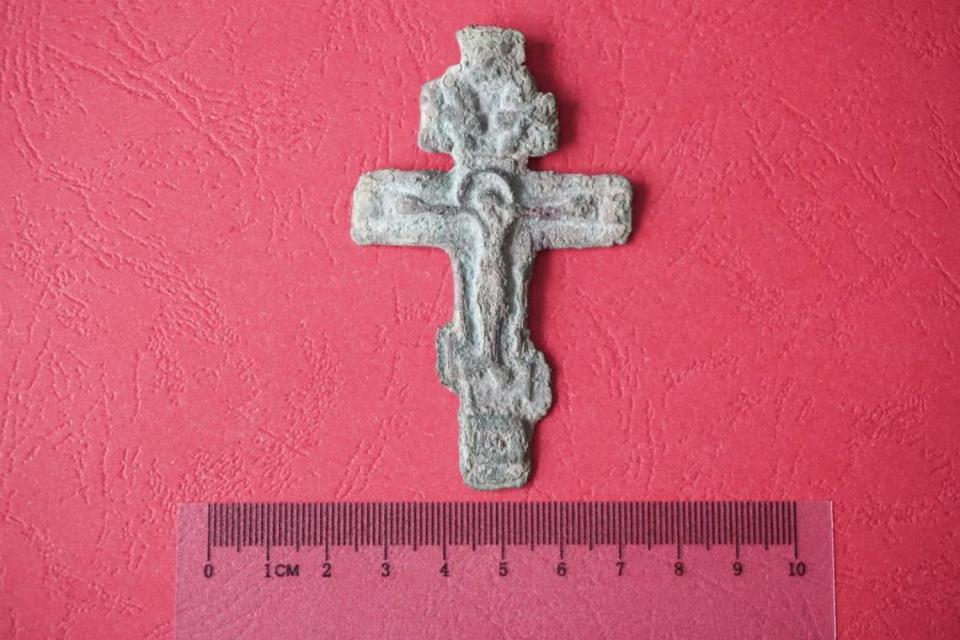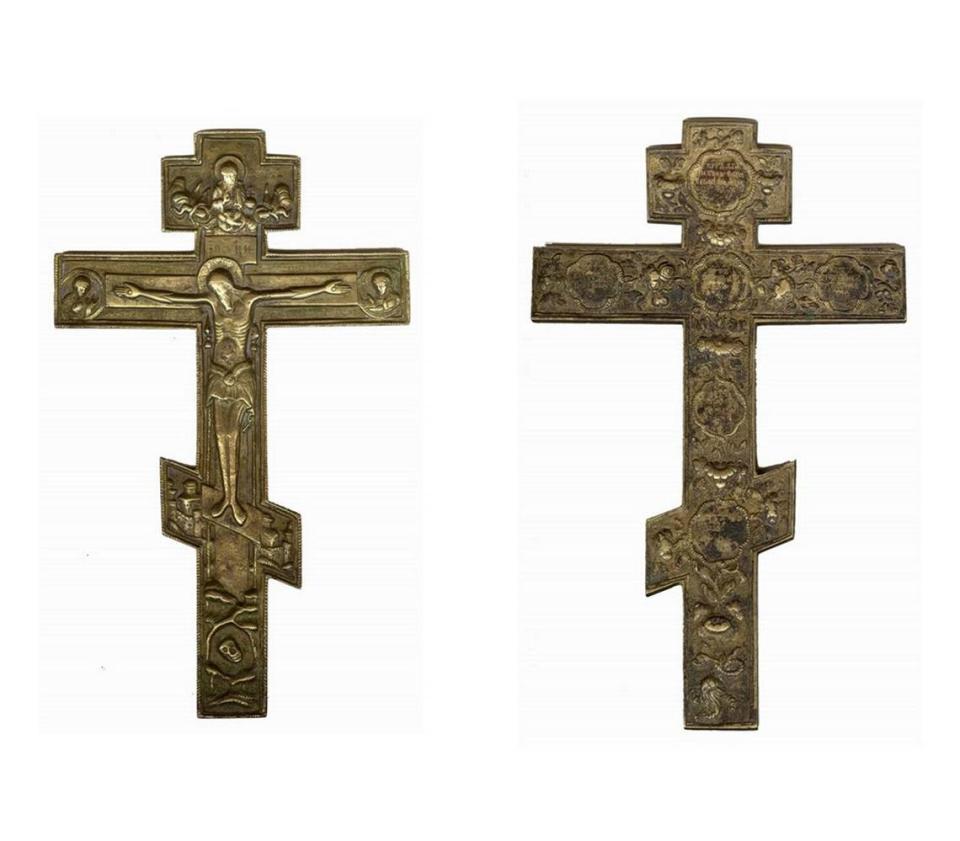Metal detectorist stumbles on centuries-old artifact — once banned by tsar — in Poland
A metal detectorist in Poland recently discovered a religious artifact that likely dates back several hundred years — and was once outlawed.
While searching an area in Niedrzwica Duża, a commune about 100 miles southeast of Warsaw, he spotted a metal object embedded in the soil.
It turned out to be a small cross made from copper alloy, according to an April 24 news release from the provincial government’s monument conservation office.
Uncover more archaeological finds
What are we learning about the past? Here are three of our most eye-catching archaeology stories from the past week.
→ Farmer loses plow part in Polish field — then finds historic artifact during search
→Divers remove ancient Roman cargo from shipwreck — and find unique carvings. See them
→ Metal detectorists find ancient portrait in Danish field. See the 'legend' it depicts

Measuring just a few inches in length, it depicts Jesus nailed to the cross as well as several other figures surrounding him, photos show.
It was likely created sometime in the 18th or 19th centuries, meaning it could be around 300 years old, officials said.
The object is associated with Russia’s Old Believers, a group of Eastern Orthodox Christians who eschewed church reforms and favored simple relics.
This type of cross was once prohibited in the Russian Empire, which at various points included parts of modern-day Poland.
In 1723, the Russian church, under the authority of Tsar Peter I, outlawed the production and sale of cast icons, officials said.
Peter I, commonly known as Peter the Great, was known to favor more modern official art, according to a 2019 study published in the journal Religions.

“To justify this prohibition, the authorities claimed that the images were not skillfully executed and poorly portrayed the saints and, therefore, deprived the saints the honor due to them,” according to a report from the Smithsonian Institution.
Following the proscription, copper icons were ordered to be locked away, and those for sale were confiscated and transported to town governments.
“There is no indication in the literature that the prohibition was originally directed against the Old Believers,” according to the report. “It may, in fact, have reflected the government’s need to conserve copper for military and minting purposes.”
The recently unearthed cross has not yet been fully examined, so it’s exact age and origin are not yet known, officials said.
Google Translate was used to translate a news release from the Lublin Provincial Conservator of Monuments.
Metal detectorist stumbles on 250-year-old artifact linked to a pope, photos show
Ruins from 1,000-year period — including wine cellars — found outside Paris. See them
Underground builders find pottery pieces in Poland — and discover 600-year-old garbage

